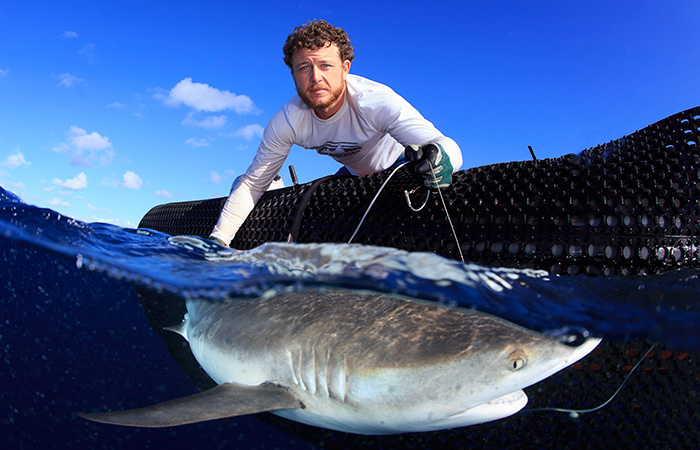Oh, the Places Sharks Go
-
-
slice.mit.edu
Filed Under
Recommended

Mako are particularly interesting because they are elusive and can swim really fast—up to 60 miles per hour—but they are just one of the many types of sharks that Braun and his colleagues are studying. Braun is focused on better understanding sharks and, ultimately, using that data to inform conservation and management. Given that sharks play such a large role in the ecosystem of the ocean—since many species are top predators—depletion of sharks raises large concerns about throwing off the balance in the ocean’s living network.
In the past decade, Braun and colleagues at WHOI’s Fish Ecology Lab have placed satellite tags on around 200 sharks and other fish. In addition to makos, they have tagged whale sharks, black-tipped reef sharks, grey reef sharks, blue sharks, white sharks, and tiger sharks.
“The problem is a lot of basic knowledge is lacking for sharks,” says Braun. “We don’t know where they go, where they reproduce, or, for some, even what they eat. We need to know all this to manage the population so that they stay in the ocean for decades to come.”
Braun—and the public—can now observe tagged sharks all over the world on OCEARCH’s Shark Tracker, which shares the data on maps online or via a smartphone app.
“One thing we might not have noticed if we weren’t doing so much tagging is that a lot of the larger, predatory species tend to make deep dives in the ocean when they move offshore, going down anywhere from 1,800 to more than 3,000 feet. It’s completely dark, it’s cold, and the pressure’s really high. It’s a hostile environment to be in no matter what kind of animal you are. We still really don’t know what comprises this layer, believed to be the largest fish biomass in the world, but we’re starting to get an idea. Predators know this resource is there, it’s like a deep ocean buffet.”
Although there is no formal training for how a PhD student studying sharks should behave in the water, it’s something he says comes pretty naturally.
“You get a feeling for how the sharks are behaving and what their level of aggression is,” says Braun. “It’s not like a shark whisperer kind of thing, but you can learn to read the body language of different fish and get a sense for what they think about you being around them. If you’re in the water and the shark doesn’t want you to be there that’s clear. They tend to swim faster, accelerate more quickly, and often flare their pectoral fins (the ones on the front and bottom) downward. You can see that in their behavior and get out of the water.”
Although he's not telling everyone to get in the water with them, people should not be scared of sharks, he says. Each year humans kill more than 100 million sharks while sharks kill fewer than six people worldwide—and only one every two years in the US. Braun hopes that the more sharks are understood, the more fear will turn to fascination. After all, sharks have been around for nearly 400 million years and have survived five massive planet extinction events.
“A lot of the technology advances that we’ve had in the last decade or so have really allowed us to better understand sharks and also better communicate and share with people how fascinating these animals are.”







